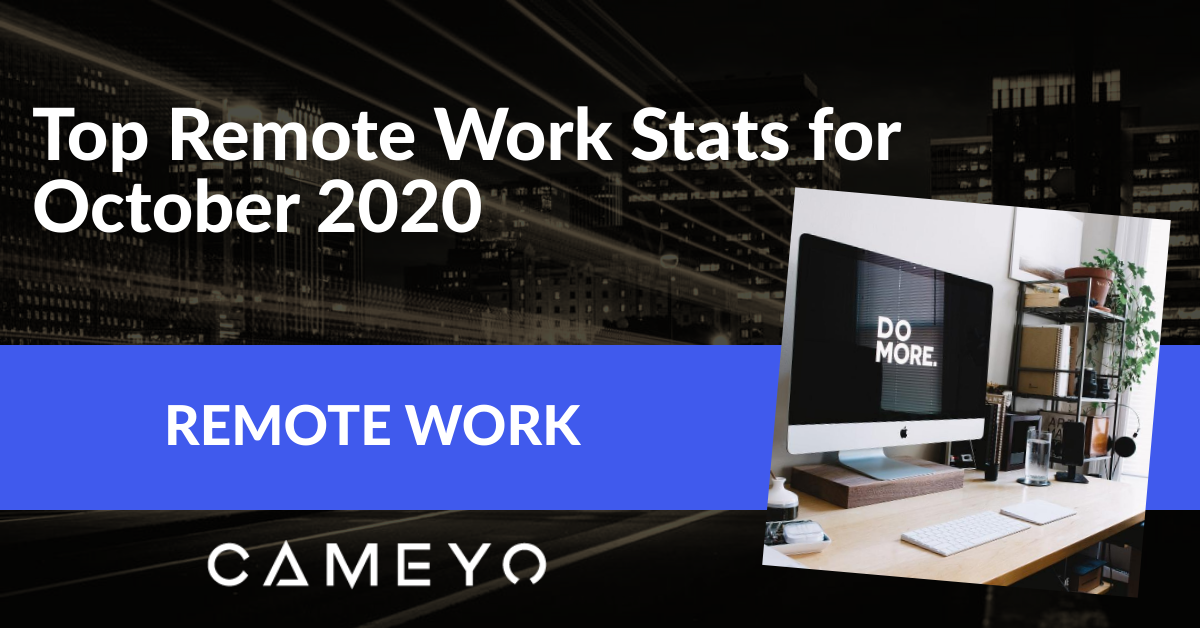These days, the situation on the ground is changing so fast that it can be hard to keep up. Nowhere is that state of flux more apparent than in the workplace, which continues to see a shift to remote and work-from-home models. 
To help keep things in perspective, let’s take a look at some of more surprising and exciting stats on remote work from recent months. The trends that they highlight could help you optimize your own organization’s IT environment and prepare for a very different future.
Remote work boosts employee productivity & satisfaction
According to TechRepublic, a Flexjobs survey found that 95% of workers who’ve been working remotely during the COVID-19 pandemic say their productivity is equal to or higher than it was at the traditional office. The reasons? Fewer distractions and more individual control over their workspace.
Not surprisingly, the same survey noted that a solid majority (65%) of remote workers also want to continue doing so full-time after the crisis is over.
Employers who can support those remote workers are therefore likely to see the dual benefit of employees who are both happier and more productive. No wonder, then, that Flexjobs saw a continued 12% increase in remote job listings between July and August 2020. Furthermore, between Q2 and Q3 2020, there was a 53% increase in the number of new companies recruiting remote workers.
The move to remote work is real—and here to stay
As we’ve noted before, the Flexjobs report isn’t the only indicator of a growing—and permanent—shift to remote work. Charity-minded shopping site DealAid.org conducted a survey of 1,000+ US employees and found that 79% of full-timers are now working remotely. Nearly all of them (92%) are happy doing so, and 57% of them said they’re more productive.
Mark McKee, the president and COO of payroll software company OnPay, echoed some of those findings in a recent article for Forbes. His company’s State of Small Business in 2020 survey found that 70% of employees said working from home was either easier or no more difficult than their pre-pandemic work environment. Nearly one-quarter said it was much easier.
Their employers have adapted in kind. Whereas 44% of the small businesses had a formal work-from-home policy before the pandemic, close to three-quarters adopted one in response to statewide shelter-in-place orders. An additional 50% of those employers are now planning on having some form of remote workforce post-COVID-19.
Number of mobile workers predicted to grow to 93.5 million
Leading market intelligence provider IDC puts some of those trends in context with its forecast that the number of mobile workers will expand to 93.5 million in the United States in 2024. That, as ZDNet reports, is up from 78.5 million in 2020. It means that mobile workers will represent almost 60% of the US workforce—a growth largely driven by the current shift to remote work.
For reference, the current population of the United States is 330 million. So, to put it another way, at least one in every four Americans will be engaged in mobile and/or remote work in the near future.
Remote work raises security concerns among IT pros
Change inevitably comes with some uncertainty. Which is why IT leaders are uneasy about the security implications of remote work, according to a new global report from Tessian. A story from Australia’s IT Brief notes that over 80% of those IT experts worry that work-from-home staff put their company at greater risk to cyberattacks.
Those concerns are validated by recent experience. Between March and July, half of the organizations surveyed were faced with a security incident of some kind. Half of them were phishing attacks. And that doesn’t represent the total number of phishing attempts. Over three-quarters (78%) of remote workers received phishing e-mails on their personal devices during that five-month period. Even more concerning is that 68% said they clicked on the malicious links or downloaded the attachments.
At the same time, the IT leaders in Tessian’s report reported an increase in ransomware attacks using phishing as a vector. A separate article from ITWeb corroborates that. Compared to the same period in 2019, Kaspersky research has shown that ransomware attacks increased more than tenfold in the first two quarters of 2020.
Stay secure and ahead of the curve with Cameyo
Cameyo’s digital workspace solution is already working to safeguard against the spike in targeted ransomware while laying the groundwork for your organization’s current and future shift to remote work. Instead of watching where trends are headed, you’ll be setting them—and reaping the benefits of being at the forefront. Sign up today for your free trial of Cameyo and we’ll help get you started with our secure, user-friendly approach to supporting your remote workforce.
